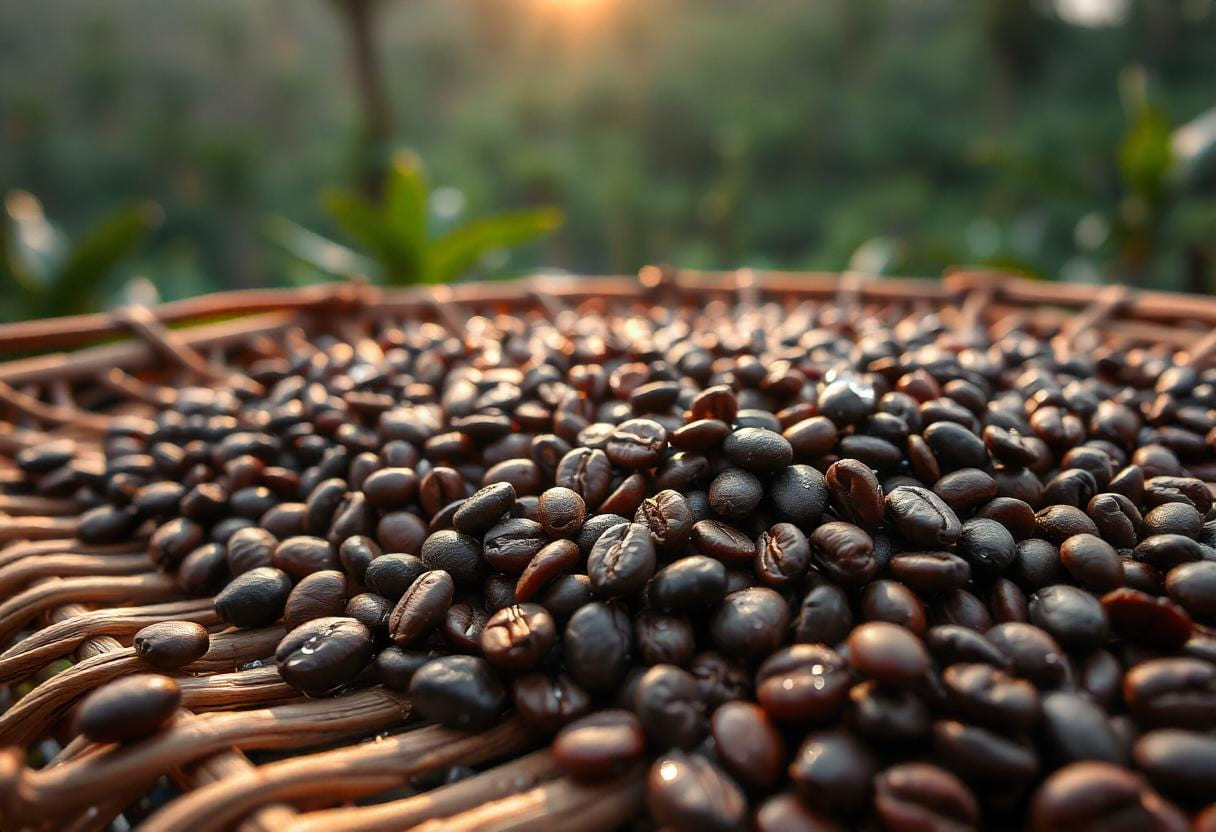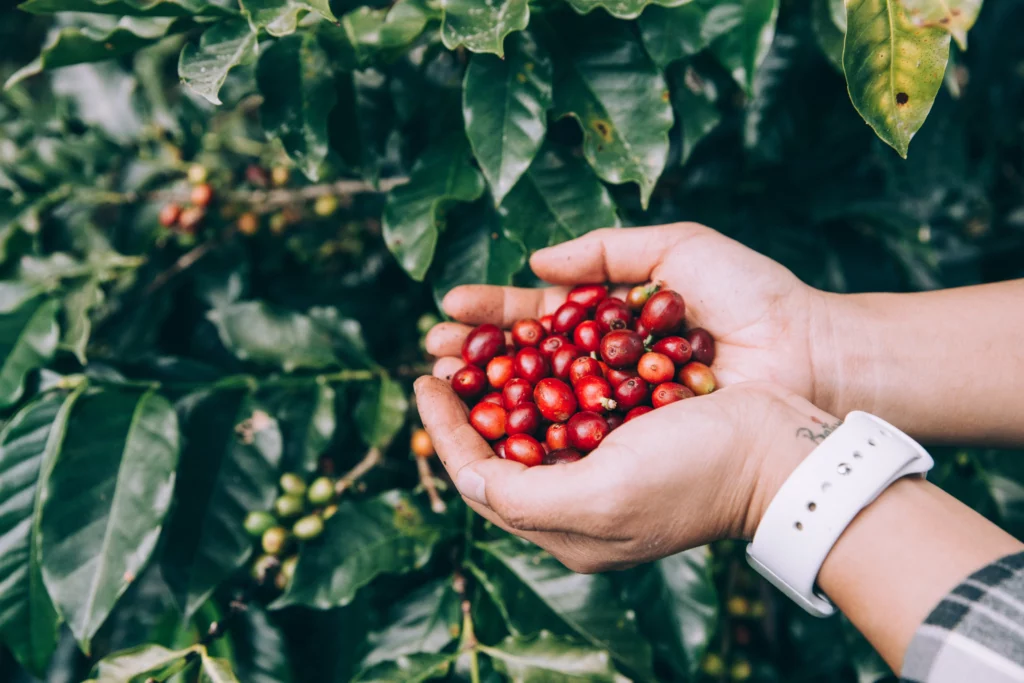Gayo Coffee of Aceh: Indonesia’s Crown Jewel of Specialty Beans
Introduction
Nestled in the highlands of Central Aceh, Sumatra, Gayo coffee, also called Kopi Arabika Gayo, stands as one of Indonesia’s most iconic specialty coffees. Cultivated at altitudes ranging from 1,200 to 1,700 m on the slopes near Takengon and Lake Laut Tawar, this coffee is celebrated for its rich body, smooth low acidity, and complex flavor profile. Today, it is recognized as a Geographical Indication (GI) in Indonesia, the EU, and the UK, attesting to its unique quality and regional pride.
This article takes an immersive journey into the world of Gayo coffee, exploring its geologic birthplace, the people who grow it, its traditional processing, distinctive taste, brewing styles, and its rising status on the global specialty stage.
1. Gayo Highlands: Terroir and Origins

The Gayo Highlands home to the ethnic Gayo people are nestled in the Barisan Mountains of Aceh’s inland, encompassing districts such as Takengon, Bener Meriah, and Central Aceh These elevations, between 1,200 and 1,700 m above sea level, offer a unique microclimate: cool tropical temperatures (13–28 °C), fertile volcanic soils, and abundant rainfall (up to 3,000 mm annually).
Coffee was introduced to this region by the Dutch in 1924, building on Indonesia’s colonial coffee legacy. Since then, smallholder farms operating shade-grown, organic systems have nurtured the Gayo Arabica varietal into a world-class specialty product.
2. The Gayo People & Coffee Culture

The Gayo people are an Austronesian ethnic group of around 337,000 individuals, living primarily in Central Aceh. Their relationship with coffee spans generations. Here, cultivating coffee isn’t just agriculture; it’s a tradition deeply woven into the social fabric.
-
Coffee is grown under shade, often intercropped with local fruit and spice trees.
-
Harvesting is manual and selective; farmers pick only ripe cherries across multiple passes.
-
Many farms are certified organic, fair trade, or Rainforest Alliance, reflecting a dedication to sustainable and ethical production.
These practices preserve both environmental health and cultural heritage, enabling Gayo communities to thrive economically while maintaining centuries-old traditions.
3. Processing: The Signature of Gayo

Central to Gayo coffee’s identity is its hallmark processing style: wet-hulling, or giling basah. This method shapes the bean’s color, scent, flavor, and body.y The typical cycle is:
-
Harvesting & pulping – cherries are hand-picked ripe, depulped, and left to ferment briefly with mucilage.
-
Partial drying – parchment-coated beans are air-dried to 30–35% moisture.
-
Wet hulling – beans are hulled while still moist, then further dried to export-ready levels (~12%)
This yields beans with a bluish-green hue, heavier body, softer acidity, and flavorful undertones like earthy, herbal, woody, or even musty notes typical of Sumatra coffees
4. From Farm to Cup: Tasting Gayo
4.1 Cupping Profile
Gayo coffee is renowned for several key sensory qualities:
-
Body: medium to full, velvety, and rich
-
Acidity: generally low to balanced, offering subtle brightness without sharpness
-
Flavor notes: a harmonious mix of chocolate, vanilla, herbal and floral aromas, mild fruit notes such as berries or apple, often rounded out by nutty sweetness
Tasting notes may include blackberries, orange, brown sugar, peppermint, jasmine, green tea, spices, apple, and dark chocolate, especially in coffees processed by anaerobic or honey methods
4.2 Regional & Roast Variations
Recent specialty coffee trends have ushered in diverse processing styles beyond traditional wet-hulling, including:
-
Anaerobic honey: cherries fermented without oxygen, preserving sweetness and enhancing fruity tones.
-
Semi-washed (fully washed): removes most mucilage before conventional drying, resulting in cleaner profiles with brighter notes while retaining the signature Gayo body.
Roast levels range from light-medium for filter clarity to medium-dark for espresso depth, with darker roasts accentuating chocolate and spice notes.
5. Brewing Gayo: Getting the Most from Your Cup
To best experience Gayo’s nuanced character:
-
Pour-over/V60: Highlights its floral and fruit notes with clarity.
-
French press or drip: Emphasizes body and sweetness tone; excellent for darker, sugar-retentive roast profiles.
-
Espresso/Moka pot: Unearths the bean’s viscosity, chocolate richness, and herbal-spice complexities.
If your beans are processed anaerobically or as honey, lighter roasts and filter brews elevate their distinct fruitiness and aromatics.
6. Gayo on the World Stage
-
Geographical Indication: Recognition as Kopi Arabika Gayo (GI status) across multiple jurisdictions confirms its premium and unique identity
-
Export success: A highly sought-after bean in Europe and the U.S., commanding premium prices even during global economic downturns
-
Specialty coffee craze: Independent roasters, such as Rising Star, Mother Tongue, and others, feature Gayo regularly, showcasing its versatility and flavor breadth
7. Socioeconomic Impact & Sustainability
Estimates suggest about two million smallholder coffee families in Indonesia, many of whom are Gayo farmers. The GI and certifications (Fair Trade, organic, Rainforest Alliance) support:
-
Better incomes: Due to higher prices tied to specialty branding and certifications
-
Community resilience: Collective co-ops help fund infrastructure, training, and market access.
-
Environmental preservation: Shade-coffee systems maintain biodiversity and forest cover.
Despite the disruptive effects of climate change and limited infrastructure in remote areas, Gayo communities are increasingly tapping into sustainability programs and specialty coffee networks to solidify their future.
8. Challenges and Innovations
Key challenges include:
-
Remoteness: Logistics and transport from highland farms remain costly and difficult.
-
Climate pressure: Warmer or less predictable weather threatens yield and quality.
-
Processing consistency: Smallholder mills vary, leading to flavor/purity variation.
But innovations—like cooperative-built drying beds, adoption of anaerobic or honey processing, and improved post-harvest training—are helping Gayo farmers enhance cup quality and maintain market relevance.
9. How to Explore Gayo Coffee at Home
-
Source fresh roasted beans, ideally within 2–3 weeks of roasting.
-
Store properly: in an airtight, opaque container, cool, and away from light.
-
Grind fresh per brew method: medium-fine for pour-over, coarse for French press, fine for espresso.
-
Use filtered water at proper temperatures (92–96 °C for the filter, around 94 °C for espresso).
-
Experiment: Anaerobic or honey-processed Gayo highlight floral/fruit notes; traditional wet-hulled reveals chocolate-spice depth.
Conclusion
From mystical mountain slopes in Aceh to café roasters in New York and London, Gayo coffee carries the spirit of its place, high altitude, volcanic earth, sustainable practices, and unique processing, into every cup. It’s no longer just “Sumatra coffee”: it’s a benchmark for Indonesian specialty, with accolades, certifications, and fervent global fans to prove it.
Each sip of Gayo coffee is an invitation into Aceh’s landscape and its people’s care: a legacy of resilience, innovation, and connection. Whether you favor fruity vibrance or robust spice, Gayo delivers depth, meaning, and sophistication.
References & Sources
Detailed facts and tasting notes from a range of coffee authorities and roaster profiles






